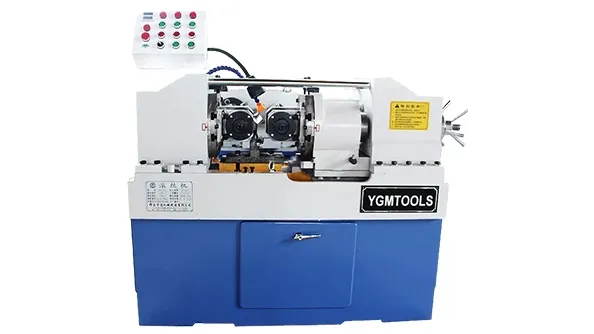
-
 Afrikaans
Afrikaans -
 Albanian
Albanian -
 Amharic
Amharic -
 Arabic
Arabic -
 Armenian
Armenian -
 Azerbaijani
Azerbaijani -
 Basque
Basque -
 Belarusian
Belarusian -
 Bengali
Bengali -
 Bosnian
Bosnian -
 Bulgarian
Bulgarian -
 Catalan
Catalan -
 Cebuano
Cebuano -
 Corsican
Corsican -
 Croatian
Croatian -
 Czech
Czech -
 Danish
Danish -
 Dutch
Dutch -
 English
English -
 Esperanto
Esperanto -
 Estonian
Estonian -
 Finnish
Finnish -
 French
French -
 Frisian
Frisian -
 Galician
Galician -
 Georgian
Georgian -
 German
German -
 Greek
Greek -
 Gujarati
Gujarati -
 Haitian Creole
Haitian Creole -
 hausa
hausa -
 hawaiian
hawaiian -
 Hebrew
Hebrew -
 Hindi
Hindi -
 Miao
Miao -
 Hungarian
Hungarian -
 Icelandic
Icelandic -
 igbo
igbo -
 Indonesian
Indonesian -
 irish
irish -
 Italian
Italian -
 Japanese
Japanese -
 Javanese
Javanese -
 Kannada
Kannada -
 kazakh
kazakh -
 Khmer
Khmer -
 Rwandese
Rwandese -
 Korean
Korean -
 Kurdish
Kurdish -
 Kyrgyz
Kyrgyz -
 Lao
Lao -
 Latin
Latin -
 Latvian
Latvian -
 Lithuanian
Lithuanian -
 Luxembourgish
Luxembourgish -
 Macedonian
Macedonian -
 Malgashi
Malgashi -
 Malay
Malay -
 Malayalam
Malayalam -
 Maltese
Maltese -
 Maori
Maori -
 Marathi
Marathi -
 Mongolian
Mongolian -
 Myanmar
Myanmar -
 Nepali
Nepali -
 Norwegian
Norwegian -
 Norwegian
Norwegian -
 Occitan
Occitan -
 Pashto
Pashto -
 Persian
Persian -
 Polish
Polish -
 Portuguese
Portuguese -
 Punjabi
Punjabi -
 Romanian
Romanian -
 Russian
Russian -
 Samoan
Samoan -
 Scottish Gaelic
Scottish Gaelic -
 Serbian
Serbian -
 Sesotho
Sesotho -
 Shona
Shona -
 Sindhi
Sindhi -
 Sinhala
Sinhala -
 Slovak
Slovak -
 Slovenian
Slovenian -
 Somali
Somali -
 Spanish
Spanish -
 Sundanese
Sundanese -
 Swahili
Swahili -
 Swedish
Swedish -
 Tagalog
Tagalog -
 Tajik
Tajik -
 Tamil
Tamil -
 Tatar
Tatar -
 Telugu
Telugu -
 Thai
Thai -
 Turkish
Turkish -
 Turkmen
Turkmen -
 Ukrainian
Ukrainian -
 Urdu
Urdu -
 Uighur
Uighur -
 Uzbek
Uzbek -
 Vietnamese
Vietnamese -
 Welsh
Welsh -
 Bantu
Bantu -
 Yiddish
Yiddish -
 Yoruba
Yoruba -
 Zulu
Zulu
Demonstrating Thread Rolling Machines in Action at Leading Factories Worldwide
The Evolution of Thread Rolling Machine Technology in Modern Factories
Thread rolling machines have become indispensable in modern manufacturing, allowing factories to produce high-precision threaded components with remarkable efficiency. This technology has evolved significantly over the years, driven by the constant demand for quality and speed in production processes. The integration of automated systems and advanced materials has transformed the landscape of thread rolling, making it a captivating subject for exploration.
The Evolution of Thread Rolling Machine Technology in Modern Factories
In recent years, factories have increasingly relied on video technology to optimize the use of thread rolling machines. Video analysis allows manufacturers to capture real-time footage of the rolling process, enabling them to identify potential inefficiencies and areas for improvement. By using high-definition cameras, operators can monitor the machinery's performance closely and make necessary adjustments to ensure consistent product quality.
thread rolling machine video factories

One of the key benefits of utilizing video technology in thread rolling is the ability to train personnel effectively. New employees can learn the intricacies of operating the machines by observing recorded footage of skilled operators. This method of training helps streamline the onboarding process while ensuring safety protocols are followed. Moreover, the accessibility of video tutorials means that workers can refresh their knowledge at any time, fostering a culture of continuous improvement.
Another exciting development in the realm of thread rolling machines is the rise of automated solutions. Many factories are now investing in robotic systems that work in conjunction with thread rolling machines, allowing for increased production rates and reduced labor costs. These sophisticated setups can handle the loading and unloading of materials, as well as quality inspection, all while the rolling process continues uninterrupted. As a result, manufacturers can produce large volumes of threaded components with minimal human intervention.
Additionally, advancements in software have enabled factories to integrate data analytics into their thread rolling operations. By collecting and analyzing data from the machines, companies can gain insights into production cycles, quality control, and maintenance needs. This information is invaluable for optimizing processes, minimizing downtime, and increasing overall efficiency in the production line.
In conclusion, thread rolling machines have undergone a remarkable transformation, becoming more efficient and accurate thanks to the integration of video technology, automation, and data analytics. As factories continue to embrace these advancements, the future of thread rolling looks promising. The result is a manufacturing environment that prioritizes quality, efficiency, and sustainability, meeting the evolving demands of the global market. By investing in these technologies, manufacturers can not only enhance their performance but also ensure they remain competitive in an ever-changing industry landscape.
